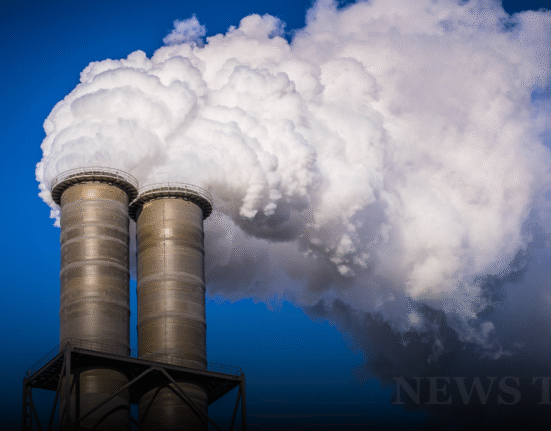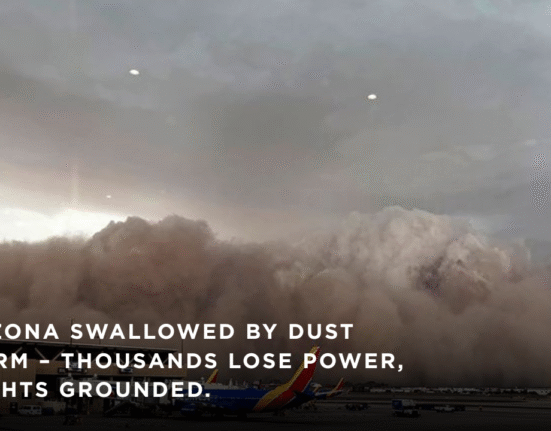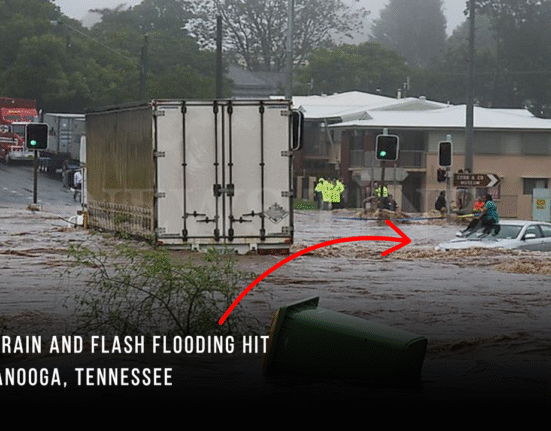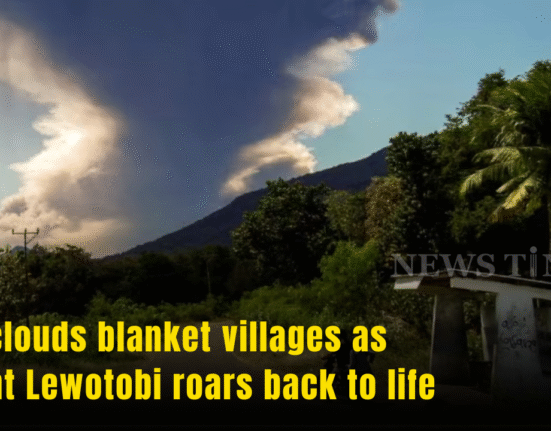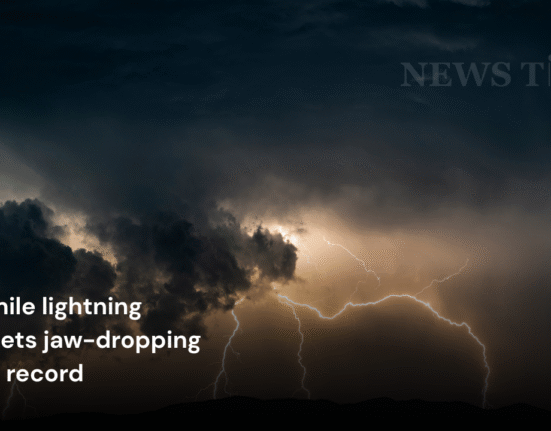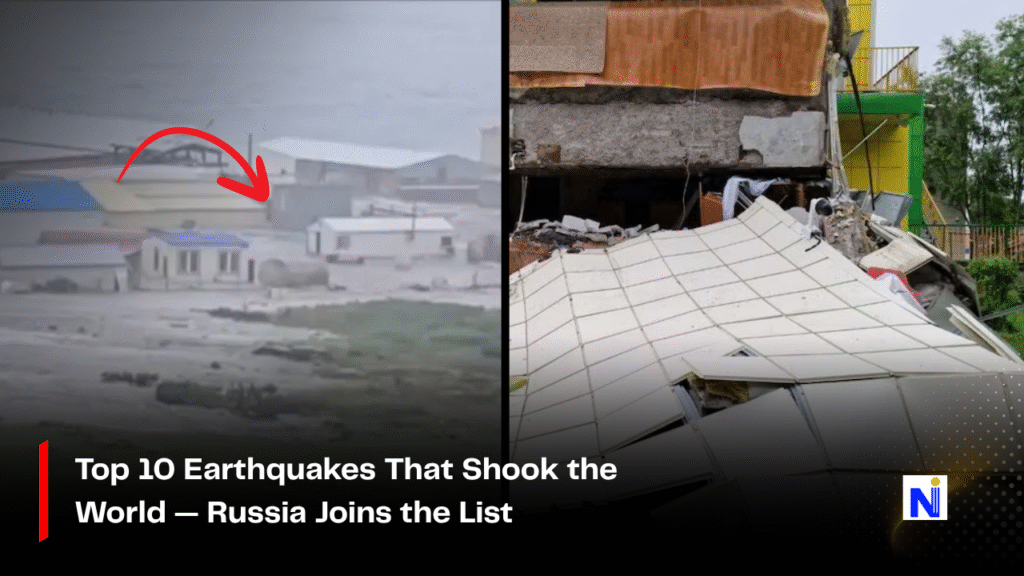
When Earth decides to move, it doesn’t hold back. On July 30, 2025, one of the strongest earthquakes ever recorded rocked Russia’s Far East, sending massive tsunami waves across the Pacific. It stirred a chilling reminder of how powerful and unpredictable nature can be. As sirens wailed in Japan and Hawaii, and warnings went out across North and Central America, the world was once again watching the raw power of tectonic forces unfold in real time.
In this article, we take a deep dive into some of the most powerful earthquakes in recorded history—their staggering magnitudes, death tolls, and the tsunamis they unleashed.
Whether you’re a geology enthusiast, disaster preparedness nerd, or just someone fascinated by nature’s might, you’ll want to buckle up for this one.
🌍 What Causes the Most Powerful Earthquakes?
Before we jump into the list, here’s a quick explainer: Earthquakes happen when tectonic plates beneath the Earth’s surface shift suddenly, releasing pent-up stress in the crust. The stronger the quake, the more dramatic the energy release.
Earthquake strength is measured on the moment magnitude scale, which replaced the old Richter scale for high-magnitude quakes. Anything above 8.0 is considered “great,” and that’s what we’re diving into here.
📊 The 10 Most Powerful Earthquakes Ever Recorded
Here are the most significant earthquakes on record based on magnitude, impact, and historical documentation:
1. Biobío, Chile — 1960 (Magnitude 9.5)
- Also known as: Valdivia Earthquake
- Death toll: Over 1,600
- Aftermath: Triggered tsunamis across the Pacific, even reaching Hawaii and Japan.
This monster quake remains the strongest earthquake ever recorded. It shook central Chile so violently that entire coastal towns were destroyed. The event lasted around 10 minutes, causing landslides, tsunamis, and mass destruction.
2. Alaska, USA — 1964 (Magnitude 9.2)
- Location: Prince William Sound
- Duration: Nearly 5 minutes
- Casualties: Over 130
Known as the Great Alaskan Earthquake, it led to massive landslides and tsunamis. Anchorage suffered severe damage, and the quake was followed by thousands of aftershocks over the next several weeks.
3. Sumatra, Indonesia — 2004 (Magnitude 9.1)
- Tsunami fatalities: Over 230,000 people in 14 countries
- Hardest-hit: Indonesia, Thailand, India, Sri Lanka
One of the deadliest natural disasters in history. Entire villages disappeared. It was also one of the first major disasters to be heavily documented in the digital age.
4. Tohoku, Japan — 2011 (Magnitude 9.1)
- Impact: Fukushima nuclear disaster
- Deaths: Over 18,000
This quake unleashed a massive tsunami that crippled the Fukushima Daiichi nuclear power plant, leading to a nuclear meltdown. Japan still bears the scars today.
5. Kamchatka, Russia — 1952 (Magnitude 9.0)
- Tsunami height in Hawaii: 30 feet (9.1 meters)
- Deaths: Surprisingly, none reported
The quake was followed by a large tsunami, but prompt evacuation likely saved lives. The seismic shock was felt globally.
6. Biobío, Chile — 2010 (Magnitude 8.8)
- Duration: 90 seconds
- Casualties: Over 500
This quake shook the capital Santiago and triggered a tsunami. While not as deadly as the 1960 quake, it caused billions in damage.
7. Esmeraldas, Ecuador — 1906 (Magnitude 8.8)
- Casualties: Approx. 1,500
- Tsunami reach: As far as San Francisco and Japan
Back when there was little seismic preparedness, this quake was catastrophic for coastal Ecuador and Colombia.
8. Rat Islands, Alaska — 1965 (Magnitude 8.7)
- Tsunami height: 11 meters (35 feet)
- Damage: Minor due to remote location
Although incredibly powerful, the quake occurred in a sparsely populated area. Some buildings and an airstrip were damaged.
9. Tibet/Assam, India — 1950 (Magnitude 8.6)
- Casualties: Over 780
- Unique effect: Created a temporary dam on the Subansiri River
The resulting landslide lake eventually burst, causing a secondary disaster.
10. Sumatra, Indonesia — 2012 (Magnitude 8.6)
- Casualties: Minimal
- Significance: Triggered stress on nearby faults
Though not deadly, this quake increased the likelihood of future seismic events in the region.
🌊 The July 2025 Russia Earthquake: What We Know
The latest quake on July 30, 2025, with a magnitude of 8.8, struck off the coast of Russia’s Far East near the Kuril Islands. According to Russia’s Geophysical Service:
- Three tsunami waves hit Severo-Kurilsk
- Waves traveled across the Pacific, triggering alerts in Japan, Alaska, Hawaii, and New Zealand
Mayor Aleksandr Ovsyannikov confirmed quick evacuations helped minimize casualties.
📌 How Prepared Are We for Future Megaquakes?
Despite modern technology, warning times can still be short. Governments now use:
- Early-warning systems (especially in Japan, Chile, and the U.S.)
- Real-time seismic networks
- Public education drills
But vulnerability remains high in densely populated or under-resourced areas.
There’s something deeply humbling about how these earthquakes reshape landscapes—and lives—in minutes. These seismic events remind us of the immense power hidden beneath our feet. The more we understand the strongest earthquakes ever recorded, the better we can prepare and respond.
So next time you feel a tremor, take it seriously. Nature doesn’t mess around.


